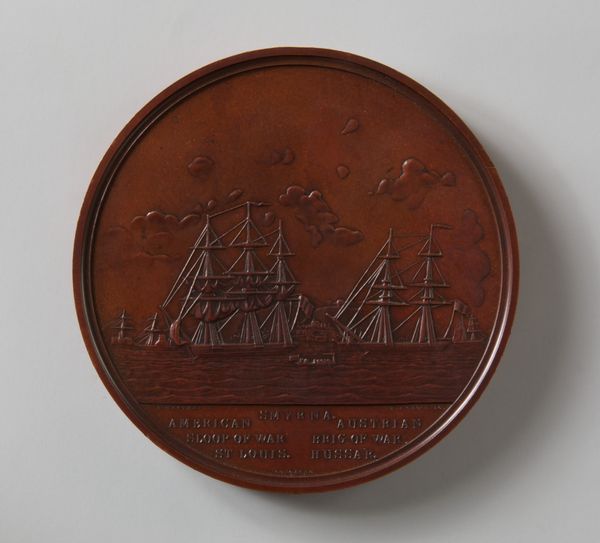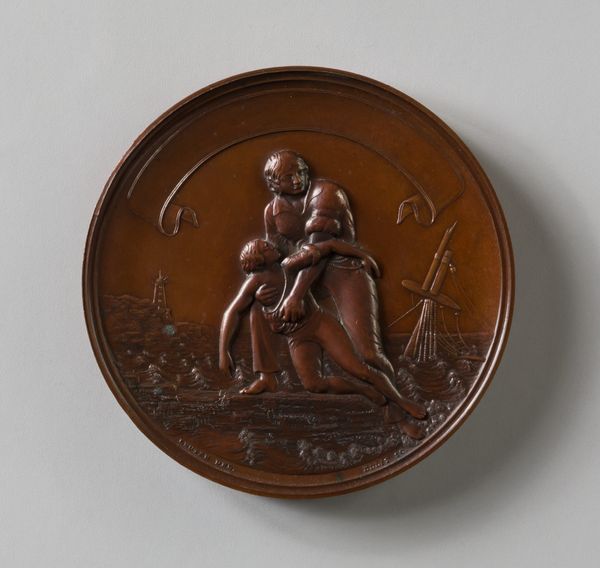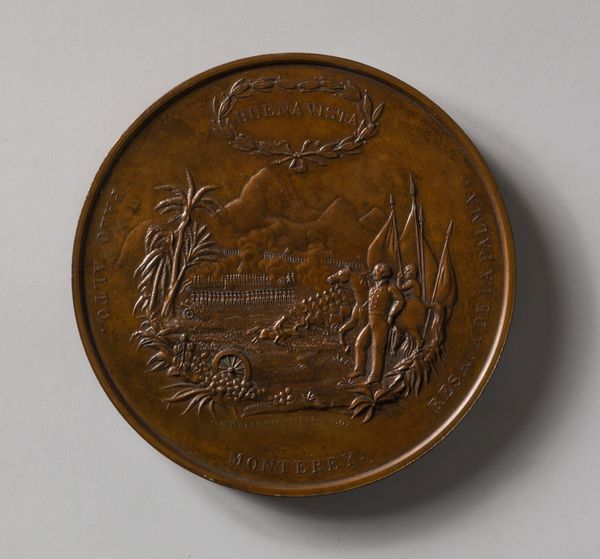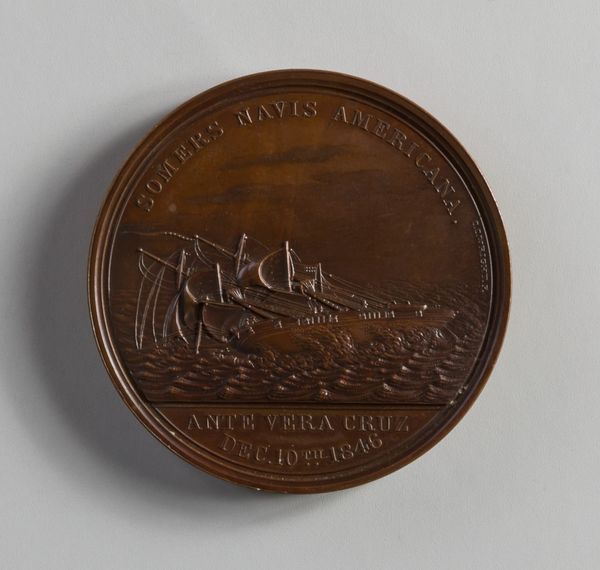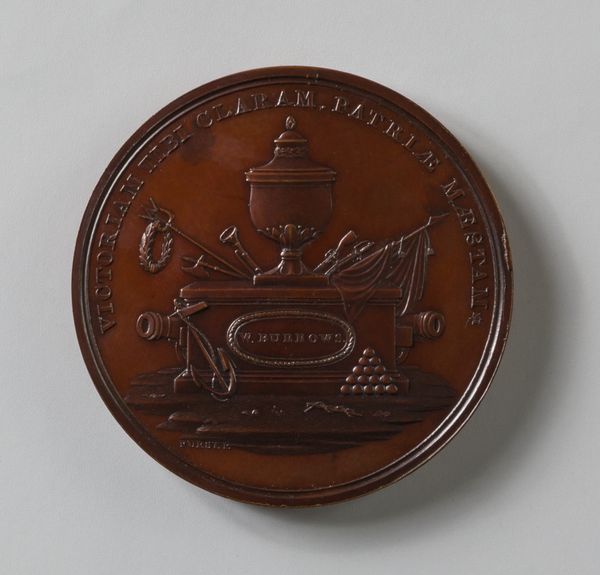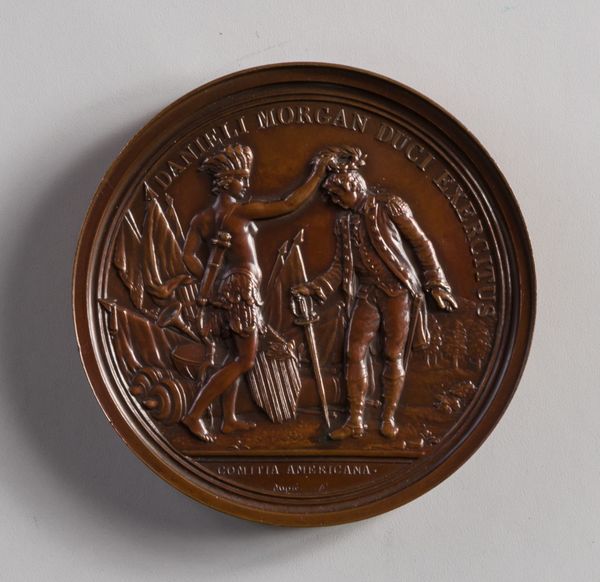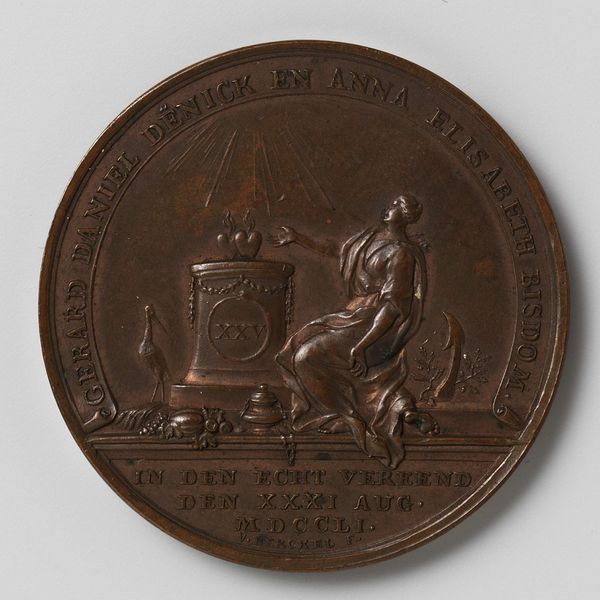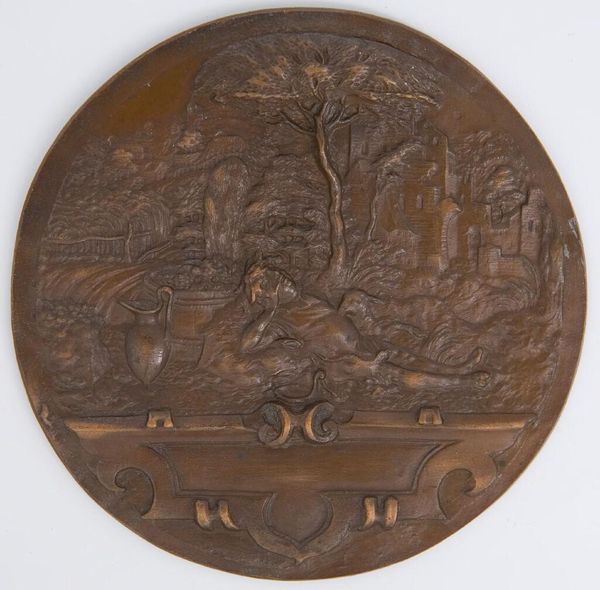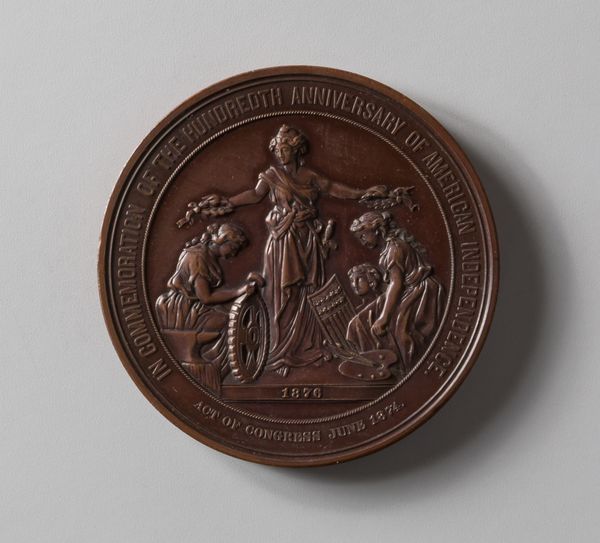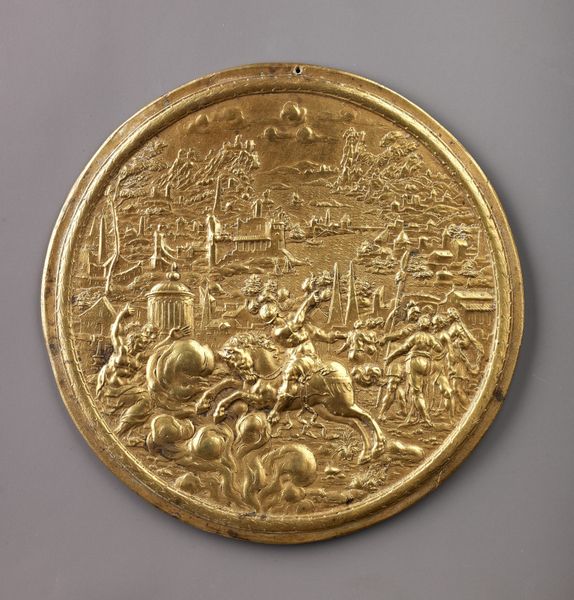
Medal of the Naval Battle of Lake Erie, 1813 1800 - 1900
0:00
0:00
metal, bronze, sculpture
#
medal
#
lake
#
ship
#
metal
#
landscape
#
bronze
#
geometric
#
ancient-mediterranean
#
sculpture
#
united-states
#
history-painting
#
realism
Dimensions: Diam. 2 5/16 in. (5.9 cm)
Copyright: Public Domain
Curator: Standing before us is a bronze medal created in the early 19th century, commemorating the Naval Battle of Lake Erie in 1813. It's an interesting piece, embodying national pride after a key victory for the United States during the War of 1812. Editor: My first thought? Intense! The energy of that naval battle practically vibrates off the bronze. All those ships, packed tight, with that assertive eagle… it's a real statement. Curator: It’s an important historical marker. Medals like these were powerful tools for shaping public opinion and celebrating military successes. They helped forge a sense of national identity during a tumultuous period. Editor: Totally, it's like a miniature propaganda poster you can hold in your hand! That fierce eagle is like Uncle Sam's spirit animal. Do you think people actually wore them, like badges of honor? Curator: Some were certainly displayed with pride. They circulated amongst high-ranking officials and were occasionally given to soldiers. It's a tangible reward representing honor, bravery, and sacrifice. It’s all about establishing narratives and reminding the citizenry about their victory. Editor: I’m getting the sense that the medal seems deliberately designed to be somewhat... intimidating? It almost makes me wonder what those at the receiving end would make of it. Did they see it simply as a token or was it understood for what it was– an icon of victory? Curator: That's a critical point. The narrative of triumph is rarely unilateral. Certainly, in Britain, objects such as this would fuel anger and prompt responses of their own. So we can see it’s less of a trophy for both sides, more so a vehicle for complex ideological competition and national one-upmanship. Editor: Exactly. It also makes you consider who exactly this piece intended to represent. It's not simply a recollection; it almost tells a story of how history is being documented for those who will only be able to recall this event and not personally live through it. Food for thought! Curator: Indeed. It really speaks volumes about how even small, seemingly simple objects can embody such vast historical narratives and complex viewpoints. Editor: Yeah, I won’t look at my spare change in the same way now! You realize these medallions must have circulated like crazy during and after the war. Quite insightful, thank you!
Comments
No comments
Be the first to comment and join the conversation on the ultimate creative platform.
